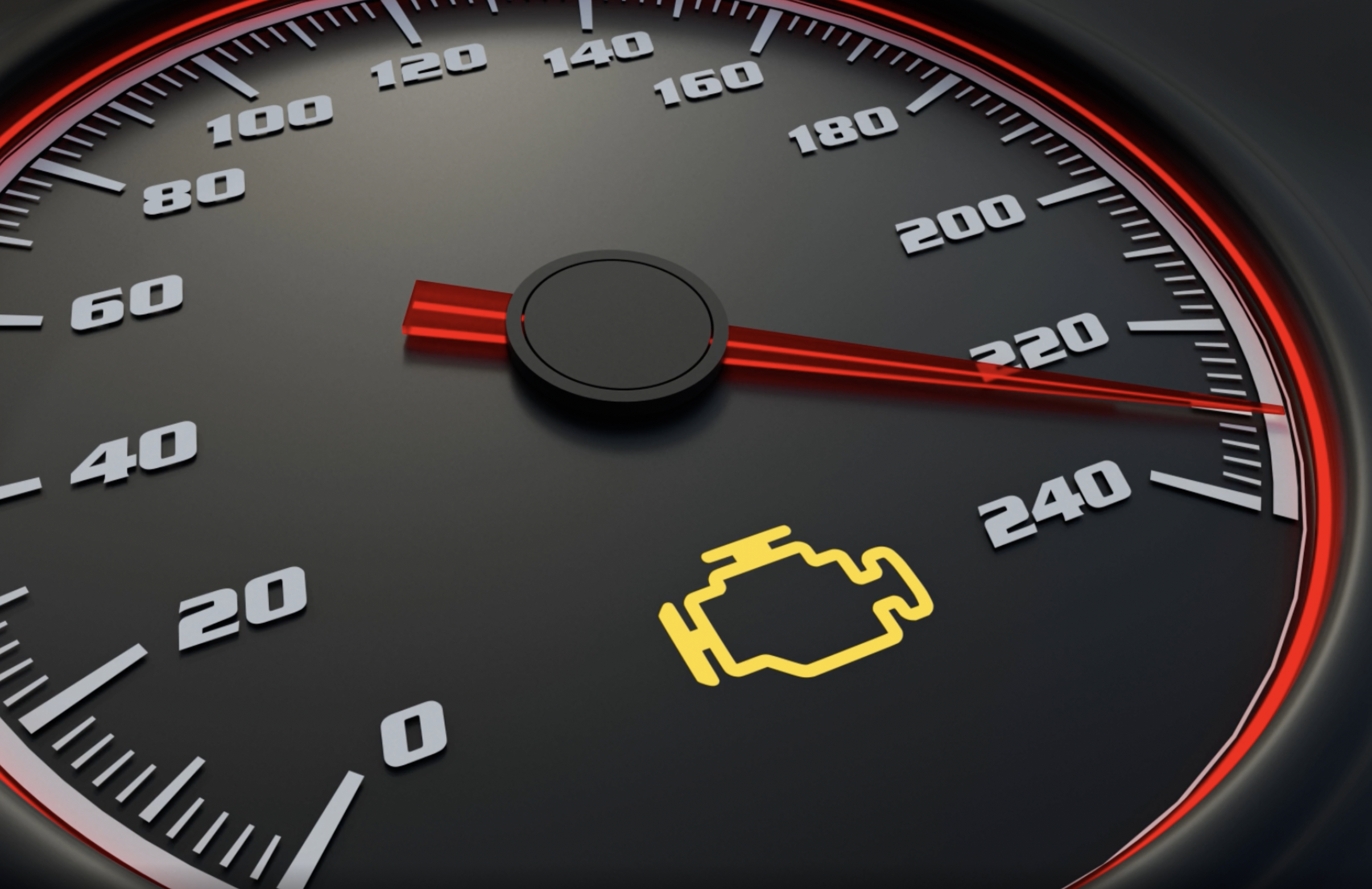SYMPTOMS OF A BAD OXYGEN SENSOR
purpose
The purpose of the oxygen sensor is to measure the amount of oxygen in the exhaust system. Once this oxygen sensor gets hot enough to function, the ECM (Engine Control Module) uses the data to either add or reduce fuel by controlling the fuel injectors to achieve the perfect air-fuel ratio.
For example, if the sensor measures a rich condition, which means more fuel and less air, the ECM is going to reduce fuel. If the sensor measures a lean condition, which means more air and less fuel, the ECM will command more fuel.
The average life expectancy for an oxygen sensor is around 100,000 miles.
LOCATION
Most cars have two oxygen sensors. One before the catalytic converter(upstream) and one after (downstream). Some cars can have three or even four O2 sensors, depending if you have two catalytic converters. Today we’ll be focusing on the oxygen sensor that’s located before the catalytic converter(upstream).
symptoms
engine light
The first symptom of a bad oxygen sensor is having an engine light on. Here are some codes related to a bad O2 sensor:
P0150 - P0167
Ensure you can access your car's diagnostic codes by acquiring an OBD2 scanner here.
It’s also important to note that you can still have a faulty oxygen sensor without an engine light, so let’s move on to the next symptom.
poor performance
The second symptom you might be experiencing with your car is poor engine performance. The better your car can come to a perfect burn, the better performance it will have. If you have a faulty O2 sensor, it could be sending a false rich or lean condition to the ECM. The ECM will then try to fix the problem that doesn’t exist by adding more or less fuel, messing up the air-fuel ratio. This can be the reason why your car has been sluggish lately.
rough idle
The third symptom of a malfunctioned oxygen sensor is a rough idle. Since the ECM is getting faulty oxygen data from the sensor, it messes up the air-fuel ratio and combustion. This as we know will result in poor combustion efficiency. Which explains why your car is shaking when you’re parked or at the red light.
poor mpg
The fourth symptom of a bad oxygen sensor you might be experiencing is poor gas mileage. Since the oxygen sensor is a huge influencer in the decisions that ECM commands for the fuel injection to achieve the best air-fuel ratio, if it sends a faulty signal of a lean condition or in other words more air less fuel, the ECM will want to add more fuel. This unneeded extra fuel is the reason why you have to stop by the gas station more often.
failed emissions
The fifth symptom of a bad oxygen sensor is a failed emissions test. Since there is more fuel than what is actually needed, the rest of it has nowhere to go but to go through the catalytic converter and out the tailpipe. Sure, the catalytic converter was designed to reduce harmful gases to the environment but it was never designed to convert a massive amount. This is the reason why you’re failing the emissions test.
A quick tip to see if your O2 sensor is bad is by unplugging the connector. Doing this will force your car to operate in an open loop which means the ECM is going to be using other sensors to calculate the air-fuel ratio, like the mass airflow sensor, ECT, throttle position, MAP, and others. If you see your car running better after doing so, it’s probably time for a new oxygen sensor. If you plan on replacing the oxygen sensor check out a special tool that helps out a lot here.
Check out my YouTube video!
Disclaimer: Some links in this article may be affiliate links.








